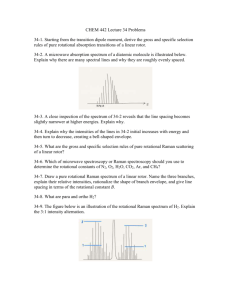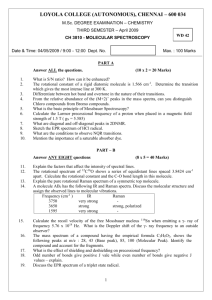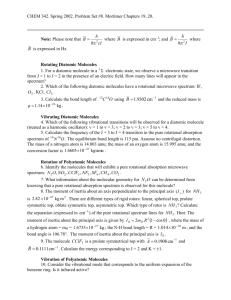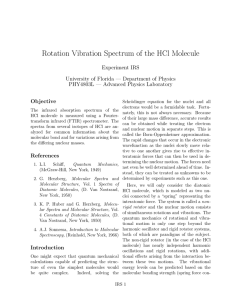Molecular Spectroscopy & Photochemistry 2013
advertisement
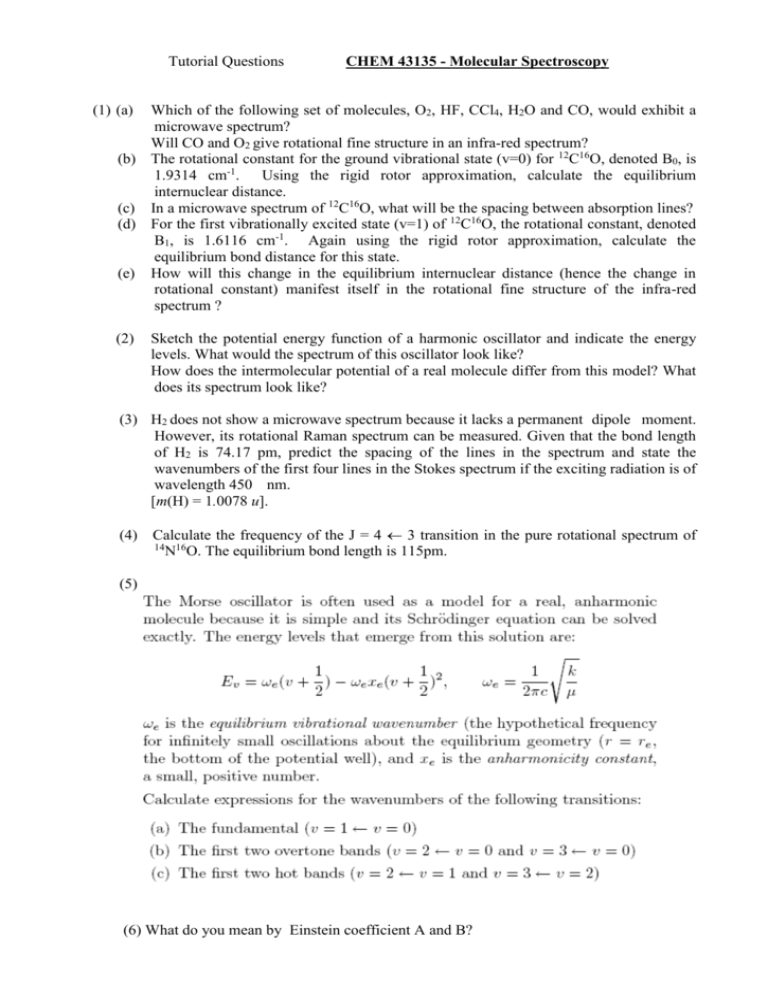
Tutorial Questions CHEM 43135 - Molecular Spectroscopy (1) (a) Which of the following set of molecules, O2, HF, CCl4, H2O and CO, would exhibit a microwave spectrum? Will CO and O2 give rotational fine structure in an infra-red spectrum? (b) The rotational constant for the ground vibrational state (v=0) for 12C16O, denoted B0, is 1.9314 cm-1. Using the rigid rotor approximation, calculate the equilibrium internuclear distance. (c) In a microwave spectrum of 12C16O, what will be the spacing between absorption lines? (d) For the first vibrationally excited state (v=1) of 12C16O, the rotational constant, denoted B1, is 1.6116 cm-1. Again using the rigid rotor approximation, calculate the equilibrium bond distance for this state. (e) How will this change in the equilibrium internuclear distance (hence the change in rotational constant) manifest itself in the rotational fine structure of the infra-red spectrum ? (2) Sketch the potential energy function of a harmonic oscillator and indicate the energy levels. What would the spectrum of this oscillator look like? How does the intermolecular potential of a real molecule differ from this model? What does its spectrum look like? (3) H2 does not show a microwave spectrum because it lacks a permanent dipole moment. However, its rotational Raman spectrum can be measured. Given that the bond length of H2 is 74.17 pm, predict the spacing of the lines in the spectrum and state the wavenumbers of the first four lines in the Stokes spectrum if the exciting radiation is of wavelength 450 nm. [m(H) = 1.0078 u]. (4) Calculate the frequency of the J = 4 3 transition in the pure rotational spectrum of 14 16 N O. The equilibrium bond length is 115pm. (5) (6) What do you mean by Einstein coefficient A and B? CHEM 43135 - Photochemistry (1) (2)


